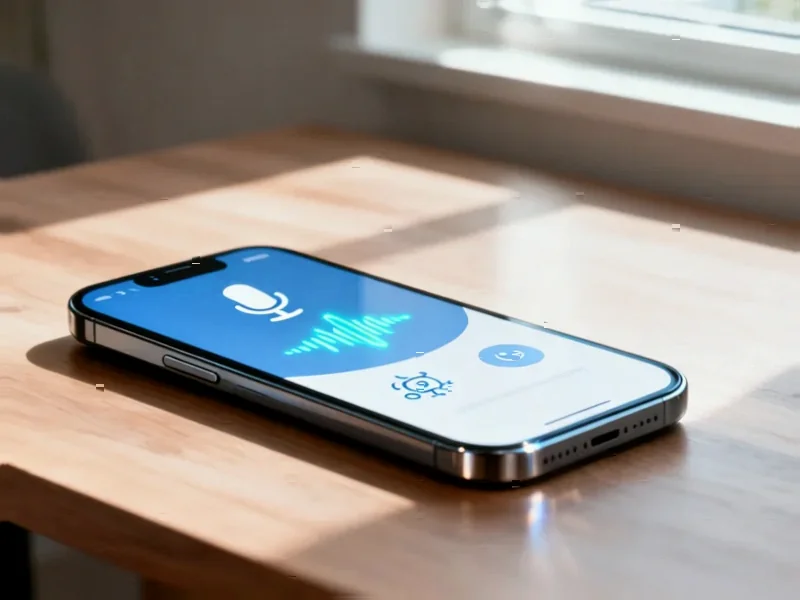According to MacRumors, Apple has extended its deadline for transitioning to the new HomeKit architecture from fall 2025 to February 10, 2026, giving users additional months to update their systems. The company published an updated support document indicating that the original HomeKit architecture will lose support after this date, potentially breaking accessories and automations for users who haven’t upgraded. The new architecture was initially introduced in March 2023 alongside iOS 16.4 and requires iOS 16.2, iPadOS 16.2, macOS 13.1, tvOS 16.2, or watchOS 9.2 as minimum versions. Apple’s support document notes that the update brings features including guest access, robot vacuum support, and Activity History while promising faster performance for homes with multiple HomeKit and Matter accessories.
The Strategy Behind Apple’s Patience
This extension isn’t just about giving users more time—it’s a calculated business decision that reflects Apple’s understanding of the smart home market dynamics. Unlike software updates that can be pushed automatically, smart home transitions involve physical hardware that users have invested significant money in. Forcing a rapid transition risks alienating customers who’ve spent hundreds or thousands of dollars on HomeKit-compatible devices. The delay suggests Apple recognizes that in the smart home space, user trust and ecosystem stability are more valuable than rapid feature deployment. This measured approach contrasts with competitors who sometimes prioritize speed over reliability in their smart home initiatives.
Positioning for Matter Dominance
Apple’s timing aligns strategically with the broader industry shift toward the Matter standard. By extending their transition window, Apple is positioning themselves as the reliable, patient player in a market that’s still standardizing. The company’s emphasis on “faster, more reliable performance” for homes with multiple Matter accessories indicates they’re preparing for increased Matter adoption throughout 2025. This isn’t just about maintaining their existing HomeKit user base—it’s about capturing the growing segment of consumers who are buying Matter-compatible devices from various manufacturers. Apple wants to be the platform that seamlessly integrates this fragmented ecosystem, and a smooth architecture transition is crucial to that positioning.
Protecting Ecosystem Revenue
The financial implications of this delay are significant. Apple’s services revenue, including HomeKit-related ecosystem sales, represents a growing portion of their business. A poorly executed transition could damage consumer confidence not just in HomeKit, but in Apple’s entire services strategy. By giving users until February 2026, Apple is protecting their recurring revenue streams from services that integrate with HomeKit. This includes everything from subscription services that work with HomeKit to the broader Apple ecosystem where smart home integration adds value to devices like iPhones, iPads, and Apple Watches. The company understands that in the long run, maintaining user trust is more profitable than rushing a transition.
Navigating Competitive Pressures
Apple’s extended timeline comes at a critical moment in the smart home wars. While Amazon and Google have been more aggressive with their smart home platforms, Apple is betting that their reputation for reliability and privacy will ultimately win over consumers. The initial stability problems mentioned in the report—now resolved—likely contributed to this cautious approach. Apple cannot afford another high-profile stumble in a market where competitors are ready to capitalize on any misstep. This delay suggests Apple has learned from past platform transitions and is applying those lessons to ensure the HomeKit architecture shift strengthens rather than weakens their position against Amazon’s Alexa and Google’s Assistant ecosystems.
What This Means for Smart Home Investors
For companies building products in the smart home space, Apple’s extended timeline provides both certainty and opportunity. Manufacturers now have a clear deadline for ensuring their products work with the new architecture, while also having additional time to develop more sophisticated Matter-compatible devices. This delay signals that Apple is committed to making HomeKit a stable foundation for the next generation of smart home innovation. The emphasis on supporting “homes with a lot of HomeKit and Matter accessories” indicates where Apple sees the market heading—toward more complex, integrated systems rather than standalone smart devices. Companies that align their product roadmaps with this vision will likely find a receptive partner in Apple.




